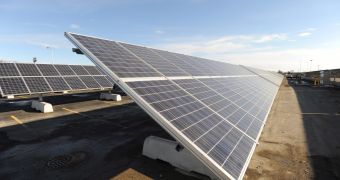With the global photovoltaic market on a constant rise for five years now, the question on everybody’s lips is which country will come to claim the first spot in annual PV installations. A recent report from ABI Research comes to lift the mystery veil: it’s the US, which is expected to surpass Germany, Italy and Japan as soon as 2013.
The figures pretty much speak for themselves: there have been no less than 900 MW of solar PV capacity installed in the US in 2010, with that number projected to double by the end of this year, thanks to a significant number of new utility, industrial, and commercial PV installations. Needless to say, commercial installations have shown the strongest gains.
Companies such as First Solar, Sun Power and Solar World are expected to be the big players on the American market at ramp-up, ahead of the 2013 installation.
“These PV companies can expect to achieve considerable growth from the U.S. market,” said Josh Flood, senior analyst at ABI Research. “In total, the three will add a combined 3,000 MW of additional manufacturing capacity for PV modules during 2011 and 2012.”
It looks like even the US Army and Navy are examining possible PV solutions to energy supplies for troops and equipment.
“The US federal government continues to focus on developing energy sources other than fossil fuels by extending its Investment Tax Credits (ITC) to 2016, and US states are setting ambitious Renewable Energy Standards (RES) or Renewable Portfolio Standards (RPS),” added Flood.
The study reveals that thirty US states have RES or RPS, with many of these states expected to introduce feed-in tariffs (FiTs) for renewable energy technologies before the end of 2012.
California, for example, currently has a RPS target of 33% by 2020 and is likely to be the first state to introduce FiTs for PV power generation. This was made possible by a recent Federal Energy Regulatory Commission decision that clarified a ruling that previously inhibited states to adopt FITs.

 14 DAY TRIAL //
14 DAY TRIAL //